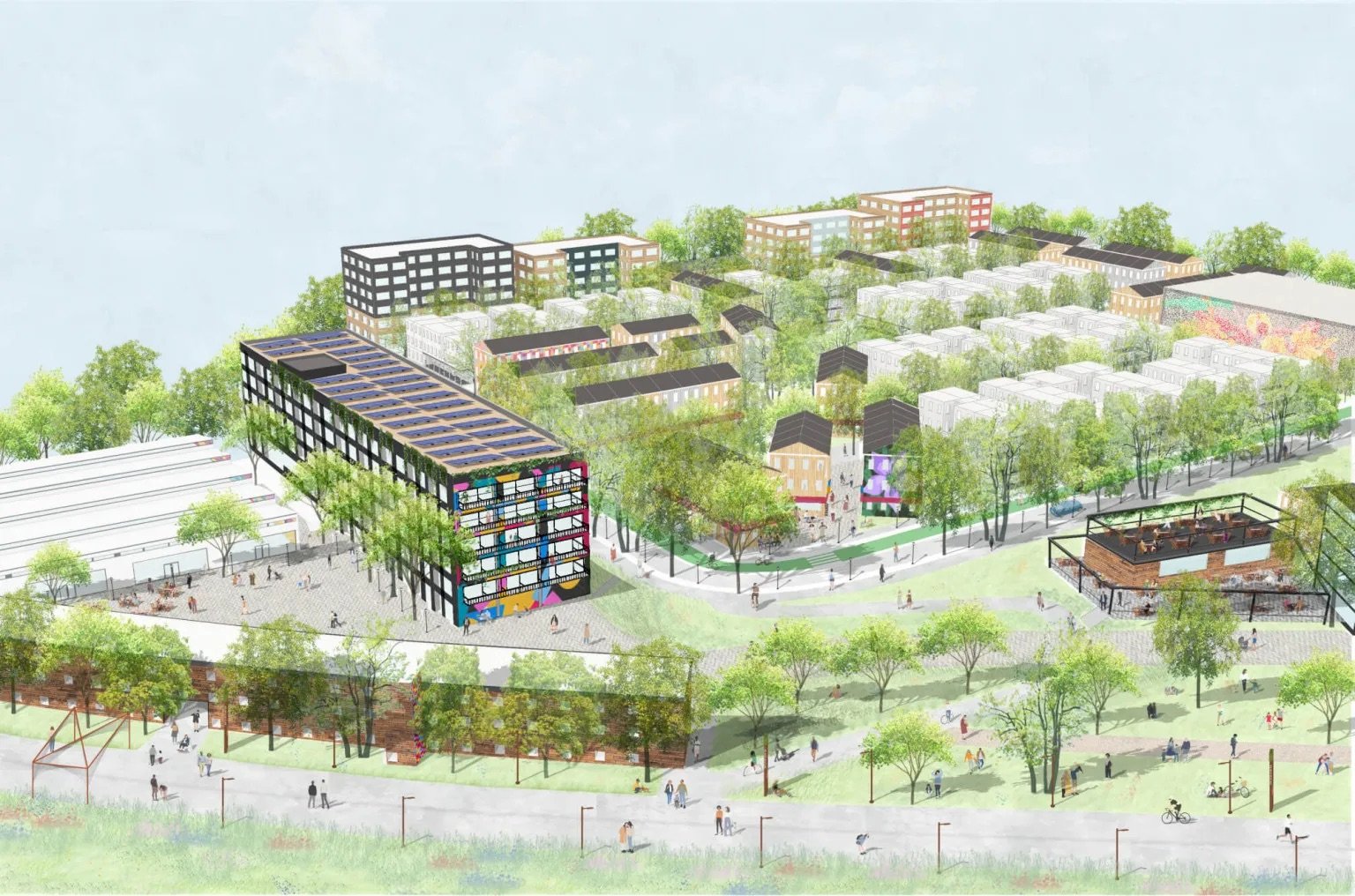Killing Me Softly - Infill Stations and No BeltLine Rail?
There was a lot of excitement on March 25th when Mayor Andre Dickens announced plans to build four infill MARTA stations where MARTA’s rail lines intersect the BeltLine on the north, south, east, and west sides of Atlanta. By emphasizing the build at Murphy Crossing and its new zero-parking, mixed-use development as the poster child for this concept, the mayor had many people excited about the potential for a cohesive transit network in which the stations connect with BeltLine rail. This spurred talk about transit equity and spreading mass transit access to people in Atlanta who don’t have it, and about setting the stage for quality sustainable growth.
While no one should be so cynical as to question Mayor Dickens' motives around his recent infill station announcement, it's more than fair to question the mayor's endgame around this plan.
This ambitious and laudable plan will take a minimum of 1.5 to 2 billion dollars to achieve and considerably more than a decade to build. No American city has built four infill stations on its heavy rail lines yet. None of these stations can open or even break ground during this or even a second Dickens term, and likely not during his successor’s. It’s also troubling that Mayor Dickens hasn’t said a word about BeltLine rail’s power to take those connections and make them future transit investments, delivering last-mile connectivity so new dense communities on the BeltLine are reachable for everyone.
But what if that isn’t the goal? What if the goal is to kill BeltLine light rail slowly? Mightn't the infill station plan be, in part, a way to quiet BeltLine light rail backers, a voluble and passionate bunch?
The slow kill, if that's what's playing out, amounts to using the MARTA infill station idea as a distraction -- "don't look there [light rail]; look here at the shiny new penny [four instill stations] on the way."
How do we know this may be in the works? Because almost two months after the infill station plan announcement, there have been no details around funding or engineering, only a small budget allocation in MARTA’s FY2025; indeed, the infill plan was announced without the most basic city-level coordination. The announcement came out of nowhere even to those close to the mayor. This seems out of step for an infrastructure project of this scope and for a mayor who likes all the “i’s” dotted and “t’s” crossed.
The slow kill plan advantage for the mayor is he needn't say anything. Others can do it for him.
"Atlanta was Promised BeltLine Light Rail. Now it Might Not Happen. Why?" -- reads the panel name for an upcoming June 18th Center for Civic Innovation hosted event entitled BeltLine Derailed.
And Councilman Amir Farokhi, whose District 2 encompasses almost all of the SCE route, wrote in his most recent constituent e-newsletter: "As many of you know, the mayor recently paused progress on the Streetcar's proposed extension from downtown to the BeltLine's Eastside Trail."
For the record, the mayor has not uttered those words publicly, but many are concluding from what he has said that that’s what he means.
Farokhi, a former chair of the Council Transportation Committee and a supporter of BeltLine light rail’s forward progress, continued in his e-newsletter: "On the other hand, the window for generational transit expansion that will serve the city long after we are gone is winnowing. There comes a time, which I'd submit is now, when we need to commit to a [BeltLine] transit approach and move forward."
What does all of this mean for transit-starved Atlantans? BeltLine light rail is still the plan -- SCE construction start is slated for 2025; the project completion date is 2028 -- until we're told it isn't. Final design work continues for the Streetcar East extension, the first rail project that can open under More MARTA. ($230 million is already set aside for its construction).
Rendering of Murphy Crossing in Southwest Atlanta, site of one of four MARTA infill stations announced by Mayor Andre Dickens in March. (Image credit: Atlanta BeltLine Inc.)
There's a huge opportunity for BeltLine light rail to interconnect with the four infill stations, circulating Atlantans around 45 city neighborhoods and the broader MARTA system. A hub-and-spokes alignment that would be the envy of cities everywhere. Indeed, the two projects should be complementary, not competing, as they feed off one another.
Failing to see the BeltLine light rail project through would be a betrayal of trust. A betrayal of the Atlanta taxpayers who overwhelmingly passed the More MARTA T-Splost initiative in 2016. (BeltLine light rail polled as Atlantans’ highest priority on that list at the time and continues to be popular -- The "People's Project" as it were).
Killing the project would also be a betrayal of this city's potential. While nearby Charlotte’s city core has been invigorated by a rail-trail light rail line, Atlanta is seemingly stuck in the mud, unable to realize the immense promise of BeltLine transit.
What's befuddling is that the mode of BeltLine transit is even a question. A 2019 Atlanta BeltLine Inc. (ABI) study clearly and demonstratively shows light rail to be the best and preferred mode of choice for the BeltLine’s unique nature. Yet here we are, in the middle of what could be the mayor’s light rail slow kill. The mayor can and must do better. He must show leadership.
If you agree, email the Atlanta City Council and the mayor to expedite the construction of BeltLine Light Rail to support the dense projects the BeltLine needs.


